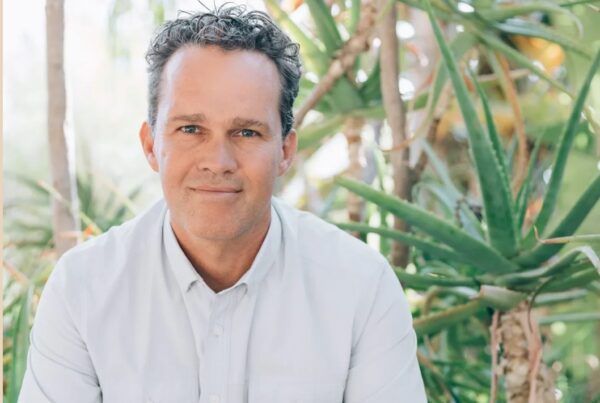No matter how well you have taken care of your skin and yourself over the years, a sagging neck is one of the most obvious and unavoidable signs of aging. Here are some healthy habits you can adopt and medical interventions to consider.
Here are 5 ways to improve a sagging neck
We looked at various treatments for a sagging neck and compiled a comprehensive information list sourced from credible references and scientific studies. From exercise, diet, beauty treatments, and aesthetics to surgical interventions. There’s something for everyone. Remember, though we are all different, these are merely guidelines. You should consult a medical specialist for further advice.
1. Daily exercises
Exercising your neck muscles daily can have a positive impact. It will improve your blood circulation, which can give it a tighter, more trim appearance. While these exercises will help, there’s no scientific evidence they will eliminate excess skin on your neck.
Here is some helpful advice from specialist neck and posture strengthening fitness site IronNeck.com.
Start with…
Raise your chin. Look up as you press your jaw forward. Let your neck extend, allowing the muscles in front to relax as the side muscles are exercised. Hold the position for 5-10 seconds and then repeat it up to 10 times for the best results.
Tone your chin
If you want to tone up the skin around your chin and upper neck, lower the edges of the mouth, just as if you were pouting. You may want to do this exercise in front of a mirror. The more exaggerated you can look, the better.
Look left and right
You’ll need a neck harness and can even use a lacrosse ball against a wall or Theracane as a trigger point for your traps, too. Start with your head in a neutral position with a packed neck. Then, look left and hold for a few seconds before repeating the movement by looking right. Focus on how you are holding your neck and chin as you are holding. The movement will strengthen your neck while also improving your range of motion. Of course, it will reduce tension in your neck and improve sagging skin, too.
Neck rotation exercise
To stretch your neck and improve its appearance, consider doing simple neck rotations. Just rotate your head slowly and gently, moving it from side to side without allowing it to turn completely to either side. Think slow, small movements while keeping your chin level with the ground. Don’t allow your chin to drop to your chest, either.
Repeat this ten times.
Cervical glides
This movement is somewhat advanced and also requires the use of a neck harness. Move slowly and deliberately to achieve the best results. Attach a neck harness and pack your neck. Then, imagine you are drawing a square with your head, moving it rhythmically and slowly. Move forward, then to the right, then left, and finally back to the starting position. This will help you regain the proper posture and can also improve the appearance of your neck skin, too.
Head raise
This neck tightening exercise is just as simple as it can be. Just lift your head and look up toward the ceiling. It will stretch the muscle groups in your neck and firm up sagging skin. It can also relieve stiffness and improve blood circulation. This is a great exercise to do first thing in the morning to help you wake up, too!
Neck flexion exercises
Neck flexion is the process of lowering your chin to your chest, a process that can help maintain a normal range of motion in your joints, bones, and muscles while also reducing sagging skin. Here is a simple neck flexion exercise you can do. Begin by resting your arms by the side of your body, engaging your core muscles as you stand up straight. Draw your shoulder blades back, then down, while drawing your chin toward your chest. Hold the position for up to 30 seconds, then repeat four times. You can deepen this stretch by positioning a hand behind your head with your fingertips at the base of your skull.
Baby bird pose
Press the tip of your tongue to the roof of your mouth and smile. As you do this, tip your head upward. Repeat 10 times.
Remember, when doing any kind of exercise, you should be able to feel a slight strain of the movement that said, you should never strain to do an exercise that’s outside of your comfort zone or range of motions. This could lead to injury.
2. Nutrition
It goes without saying that eating healthy will help you age better. A sagging neck is associated with both weight gain as well as weight loss. The optimal longevity approach is to keep your weight consistent and within the norm for your height and age.
Choose a diet high in plants and fiber supported by good protein sources. The Mediterranean or Okinawan diets are both proven over time to help with weight management and longevity. Stay away from sugar and refined carbohydrates. While good food alone cannot stop your sagging neck, you can ensure your diet includes foods with linoleic acid, which will help.
Linoleic acid helps repair damaged cells and improve skin elasticity from the inside. Also known as vitamin F, is an essential fatty acid naturally found in healthy skin, where it functions as a crucial building block for the structure of each skin cell. SkinSpirit physician Linne Linder, ND recommends eating at least half a cup of apricots a day. Why? Well, this particular fruit contains high amounts of linoleic acid.
Linoleic acid is also found in plant-based oils. This includes hemp seed, sunflower seed, grapeseed, argan, evening primrose, sesame seed, pumpkin seed, sweet almond, and prickly pear.
Randomized clinical trials have shown that replacing saturated fat with linoleic acid reduces total and LDL cholesterol. There’s also some evidence that linoleic acid improves insulin sensitivity and blood pressure
3. Supplementation and beauty treatments
N-acetyl glucosamine is cited as a key ingredient for skin creams treating sagging necks. The peptide is able to penetrate deeper into the skin due to its nano-particle size. It boosts hyaluronic acid synthesis in the skin by 107% and reduces inflammation. N-acetyl glucosamine is the basic component of hyaluronic acid, a major skin component that plays an important role in the youthfulness of your skin.
There’s a fair amount of research (some of which are listed below in references) demonstrating this ingredient may help improve the appearance of turkey neck. It firms and smooths the skin while reducing the effects of hyperpigmentation.
4. Non-Invasive Cosmetic Procedures
Non-invasive cosmetic procedures can be helpful in improving a sagging neck. You will need to consult a medical professional on what is best for you. Here are some of the more popular documented choices:
Botox (botulinum toxin type A)
The treatment takes just a few minutes and requires no recovery time; results generally last three to four months. Botox is one of the most researched treatments in the world and has a high safety record.
Laser skin tightening
There are various types of lasers that can be used to heat and tighten the skin on the neck without surgery. Depending on the type of laser, the results can be mild to moderate. Treatment usually requires multiple sessions. There is usually minimal recovery time and the results can last a few years.

Oleg GawriloFF/Shutterstock
Ultherapy
Dr. Leah Totton is an experienced cosmetic doctor and spokesperson for safety and improved regulation in the UK cosmetic industry. She suggests Ultherapy for a sagging neck.
“Ultherapy is the gold standard for prevention and treatment of turkey neck. The FDA-approved treatment is described as a nonsurgical facelift for neck tightening and subtle face lifting. It offers natural-looking results which make it a favorite amongst Hollywood’s elite. Ultherapy is a non-invasive (no injections) skin treatment that firms and lifts the neck to improve overall tone and laxity. This treatment creates collagen and elastin at a deep layer so that after just ONE treatment, you have a fresher, firmer, and more youthful neck appearance. There is no surgery, no injections, and no recovery time required.“
Kybella
The California Skin Institute promotes Kybella to manage a sagging neck. This is an injectable formulated to eliminate fat specifically under the chin. It uses deoxycholic acid to break down fat cells, so your body can remove them for long-term, natural-looking improvement.
CoolSculpting
CoolSculpting is a treatment that should be overseen by a qualified medical professional. The treatment, also referred to as fat freezing, leaves the skin unharmed as it passes through to adipose tissue, destroying fat cells with intense cold. However, this is not a simple treatment and carries some risks.
Prescription retinoids
Topicals like tretinoin and adapalene can trigger skin cell turnover. They encourage the production of collagen and elastin and thicken skin below the outermost layer.
Laser resurfacing
A CO2 laser can be used for the intense ablative treatment of neck wrinkles. It vaporizes damaged surface cells and speeds up cell regeneration, helping your skin replace old cells with new, healthy ones. Fraxel Dual and Fraxel Repair lasers work similarly to the CO2 laser, but they map skin and deliver treatment beams only to damaged cells. This makes recovery faster and more comfortable.
Radiofrequency facial
Many professional cosmetic or aesthetic centers offer a radio frequency facial. It uses targeted radio frequencies to heat beneath the skin, breaking down depleted collagen and creating a firmer, more youthful look. The heat from the radio frequencies helps to lift, firm, and refresh the skin.
“The result is a noticeably tighter appearance. To achieve the best possible results, we recommend a course of 6 facials, one-per- week for 6 weeks.
Although this is typically offered for the face area as this is where clients are typically present with sagging, it can instead be performed on the neck area to firm and tighten the neck for younger clients who have very mild sagging present.” – Dr Leah Totton is an experienced cosmetic doctor and spokesperson for safety and improved regulation in the UK cosmetic industry
 5. Plastic surgery
5. Plastic surgery
Plastic surgery offers a more immediate and long-term solution to an aging neck.
However, surgery is not for everyone. While it’s the quickest and arguably perhaps the most effective treatment, it requires cutting and can leave scars.
Here’s a list of common surgeries and medical procedures used to treat a sagging neck:
Hyo neck lift
This procedure helps tighten and smooth neck skin. A recent study reported that the HYO neck lift procedure is a promising way to reduce or eliminate the appearance of sagging neck skin.
MST operation (thread lift)
This surgery is a minimally invasive technique. It involves rejuvenating the neck by tightening the skin with barbed threads. The surgery leaves only small scars.
Z-plasty
This surgery involves direct excision of the neck’s excess skin. It’s fast and effective but leaves a visible scar on the back of the neck.
Cosmetic surgery includes a cheek lift, facelift, and neck lift
A facelift is a surgical procedure that involves tightening and lifting weak facial and neck muscles along with removing excess loose skin to create a smoother, more toned jowl and neck. The surgeon will make an incision behind each ear so that the scars are hidden; if needed, another incision may be made below the chin.
After the surgery, patients wore an elastic compression bandage around the neck and head to reduce swelling. Facelifts and neck lifts are usually performed together as an outpatient procedure. Patients are placed under general anesthesia and the procedure generally takes one to two hours.
Most patients have some bruising and swelling for the first week or so. They can return to work and other activities after two weeks. There are variations of the technique which pull the face and neck in different directions to achieve a very natural result.
Neckband surgery
According to the California Skin Institute, “Neckband surgery brings together the edges of the platysmal muscles, flattening out their appearance as subcutaneous cords from the chin to collarbone. Because this surgery focuses on just the neck bands, it is commonly performed along with neck liposuction, facelift, or a neck lift.”
Neck lift
The surgeon removes excess, sagging skin, normally by pulling it upward to an incision behind the ears. A neck lift is commonly performed with a lower facelift because the neck and lower face share muscle and skin structures. Conveniently, a physician has the ability to perform the two procedures using the same incision
Neck liposuction (lipo)
Helps chisel the neckline by surgically extracting extra fat from hard-to-reach pockets under the chin and along the neck.
Chin implant
Augmenting the chin can often help fill loose skin, reducing wattle and upper-neck sagging. It’s a fast procedure. It places a custom-shaped implant, fitted to your unique jaw, through a tiny incision hidden under the chin.
Lower face lift
While this surgery doesn’t focus directly on the neck, it can remove jowls and further contour the chin area. It is frequently carried out in conjunction with a neck lift.
Fat transfer
Excess skin or loosening of the skin caused by the natural loss of facial fat volume over time can be corrected with fat transfer. This process involves harvesting fat from one part of the body (similar to liposuction) and treating it gently in an effort to purify fat’s natural stem cells. These cells are then precisely injected into areas that require augmentation or “plumping.” Fat transfer may cause some swelling about two weeks after the procedure
Choose the right surgeon
Having plastic surgery is a weighty decision. Like any medical procedure, face and neck treatments can have side effects or risks. It’s important to choose the right surgeon. Royal College-certified plastic surgeon Dr. Otto Weiglein explains how to choose the right surgeon for your needs.
Here are 4 top key factors to keep in mind
- Credentials, credentials, credentials. You don’t want a newbie practicing on your face or body. This will be a permanent change. You want an expert, someone that has a great reputation. Do your research. Board certification will tell you their training and skills and confirm there are no malpractice claims. Once you’ve selected a top few, call them to book a consultation and make sure you resonate with them in person.
- Read patient reviews! Patients will share their candid experiences. This will be pivotal to determining whether your research pairs up with the end patient experience. It may also help you narrow down your list and make you feel comfortable with your final surgeon choice.
- Meet the team and check out the facility! The front staff, the recovery nurse, and the post-operative nurse will become part of your surgical family. There will be pre and post-follow-up appointments, so you want to be sure that the people you are dealing with are kind, patient, and thorough. This will make or break your experience. This is almost equally as important as the surgeon themselves.
- Evaluate their communication style. This goes along with meeting the team. You are about to undergo something big and different, something you need lots of new information on and you don’t want to feel undermined or that they are bothered by your questions. Do they welcome your questions and answer them in ways you understand? Find a plastic surgeon who shows an interest in getting to know you. You will appreciate this bedside manner tremendously when you wake up after having the biggest elective procedure of your life!
In closing
Over time a sagging neck can give away your age no matter how well you look after it. With continued medical and beauty advances, there are several options available: consult a skilled board certified physician who will advise what is the best approach for you.



![turkey neck [longevity live]](https://longevitylive.com/wp-content/uploads/2019/06/apricot-background-berry-1028599-620x413.jpg)
 5.
5.

![women [longevity live]](https://longevitylive.com/wp-content/uploads/2020/01/photo-of-women-walking-down-the-street-1116984-100x100.jpg)










